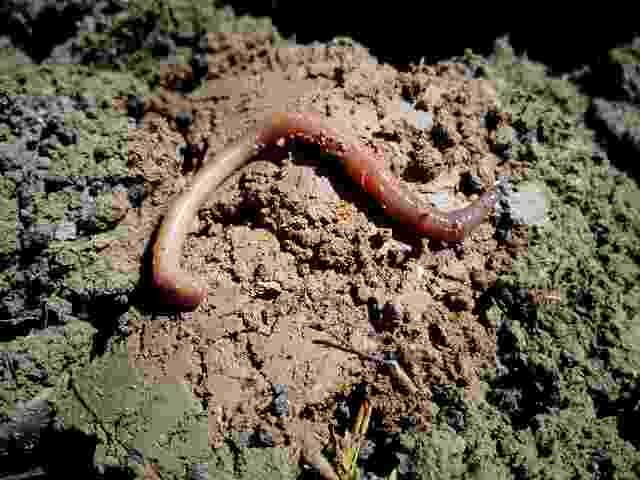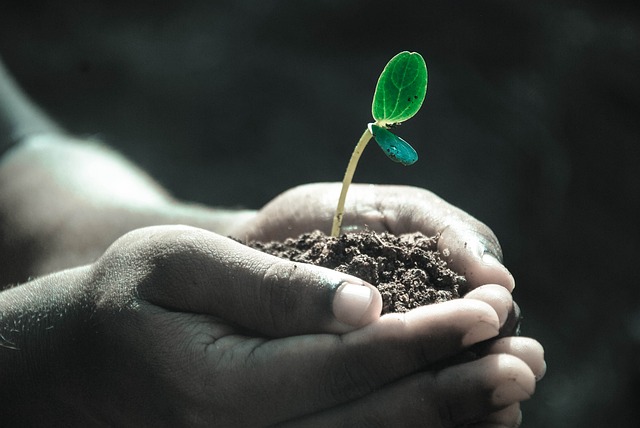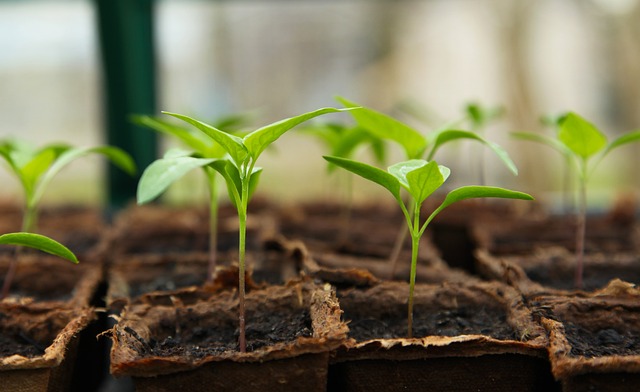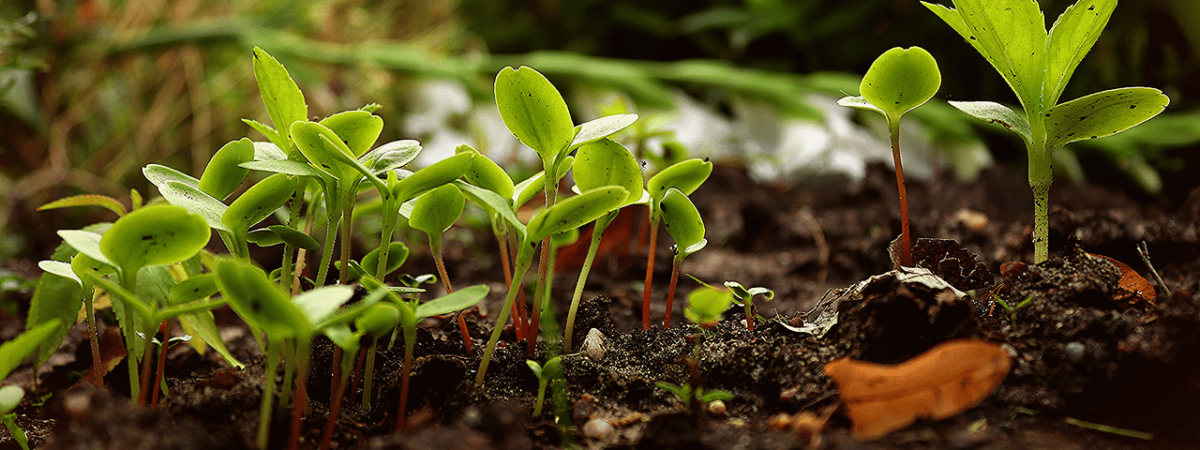Plants are the foundation of life on Earth, providing us with the air we breathe, the food we eat, and the materials we use. But have you ever wondered how plants get the nutrients they need to grow and thrive?
From macronutrients like nitrogen and phosphorus to micronutrients like zinc and iron, the world of plant nutrients is a fascinating one.
In this blog post, we’ll take a deep dive into the world of plant nutrients, exploring what they are, why they’re important, and how you can ensure your plants are getting the right kinds of nutrients they need to grow strong and healthy. So grab your gardening gloves and get ready to learn all about the nutrients that keep our plants growing strong!
Explanation of plant nutrients and their importance
Plant nutrients are essential elements required by plants for healthy growth and development. These nutrients include macronutrients, such as nitrogen, phosphorus, and potassium, which are required in larger quantities, as well as micronutrients, such as iron, manganese, and zinc, which are needed in smaller quantities. These nutrients play a vital role in the metabolic processes of plants, such as photosynthesis, respiration, and the production of enzymes and proteins.
Plant nutrients are essential elements that plants require for healthy growth and development.
Plant nutrients are important because they are necessary for the plant’s metabolic processes, such as photosynthesis, respiration, and the production of enzymes and proteins. These processes enable the plant to produce energy and carry out essential functions, such as cell division and growth.
Without adequate nutrients, plants cannot grow properly and may experience a range of problems, such as stunted growth, yellowing leaves, and reduced yield. By ensuring that plants have access to the necessary nutrients, farmers, and gardeners can improve the health and productivity of their crops and gardens.
However, it is important to maintain a proper balance of nutrients. Too much or too little of a particular nutrient can lead to nutrient deficiencies or toxicities, which can harm the plant and reduce its growth and productivity.
Overall, plant nutrients are essential for healthy plant growth and development, and maintaining a proper balance of these nutrients is critical for achieving optimal yields and plant health.
Overview of the different types of plant nutrients

There is two types of plant nutrients: macronutrients and micronutrients. Macronutrients are required in larger quantities, while micronutrients are needed in smaller amounts.
Each of these nutrients plays a vital role in the growth and development of plants, and a deficiency in one or more of these nutrients can lead to stunted growth, yellowing leaves, and reduced yield.
Therefore, it is important to maintain a proper balance of nutrients to ensure healthy plant growth and productivity. Farmers and gardeners can use fertilizers to supplement the nutrients in the soil and ensure that plants have access to the necessary elements.
However, it is important to use fertilizers properly and avoid over-fertilization, which can lead to environmental damage and reduced plant health.
Macronutrients

Nitrogen
Nitrogen is one of the most important macronutrients for plant growth, as it is a key component of chlorophyll, the molecule responsible for photosynthesis. Plants use nitrogen to produce amino acids, which are the building blocks of proteins. Nitrogen deficiency in plants can lead to stunted growth, yellowing of leaves, and reduced yield.
Importance of nitrogen for plant growth
Nitrogen is a crucial plant nutrient necessary for healthy growth and development. It is a key component of proteins, enzymes, and chlorophyll, which are essential for plant metabolism and photosynthesis. Without adequate nitrogen, plants will have stunted growth, yellowing leaves, and reduced crop yields.
Nitrogen is often present in the soil in organic forms, but it needs to be converted to inorganic forms, such as nitrate or ammonium before plants can absorb it. This conversion can be achieved naturally through microbial activity in the soil or through the use of nitrogen fertilizers.
However, excessive nitrogen can lead to environmental problems, such as water pollution and soil acidification. Therefore, it is crucial to managing nitrogen use in agriculture carefully.
Sources of nitrogen for plants
Plants can obtain nitrogen from both organic and inorganic sources. Organic sources include compost, manure, and decaying plant material. Inorganic sources include ammonium and nitrate fertilizers.
Nitrogen-fixing bacteria in the soil can also convert atmospheric nitrogen into a form plants can use. A balanced combination of these sources can ensure adequate nitrogen levels for healthy plant growth.
Symptoms of nitrogen deficiency
Nitrogen deficiency in plants can lead to several visible symptoms. These include
- Stunted growth and small leaves
- Yellowing of older leaves
- Delayed maturity and flowering
- Reduced fruit or seed production
- Browning or yellowing of leaf edges or tips
- Pale or washed-out leaf color
It is important to note that these symptoms can also be caused by other factors such as pest damage or nutrient imbalances. A soil test can help identify whether nitrogen deficiency is the underlying issue.
Phosphorus
Phosphorus is essential for plant growth, as it is necessary for root development, fruit production, and the transfer of energy within the plant. It is also important for cell division and DNA replication. A lack of phosphorus can result in stunted growth, weak roots, and poor flower and fruit development.
Importance of phosphorus for plant growth
Phosphorus is a vital plant nutrient necessary for healthy growth and development. It plays a key role in photosynthesis, energy transfer, and cell division. Phosphorus is also involved in the formation of roots, flowers, and seeds. Without adequate phosphorus, plants will have stunted growth, weak stems, and reduced crop yields.
Phosphorus is often present in the soil in low quantities and can become unavailable to plants due to pH or soil compaction issues. Adding phosphorus fertilizers or using compost or manure can help ensure adequate levels for healthy plant growth.
However, excessive phosphorus can lead to environmental problems such as water pollution. Therefore, it is crucial to managing phosphorus use in agriculture carefully.
Sources of phosphorus for plants
Plants can obtain phosphorus from both organic and inorganic sources. Organic sources include compost, manure, and decaying plant material. Inorganic sources include phosphate fertilizers. Phosphorus can also be present naturally in the soil. However, it can become unavailable to plants due to pH or soil compaction issues. Soil tests can help identify whether phosphorus deficiency is the underlying issue.
Symptoms of phosphorus deficiency
Phosphorus deficiency in plants can lead to several visible symptoms. These include
- Stunted growth and weak stems
- Reduced crop yields and fruit or seed production
- Delayed maturity and flowering
- Poor root development
- Purplish discoloration on leaves or stems
- Older leaves turn dark green or bronze and fall off prematurely
- Reduced resistance to disease and pests
Potassium

Potassium is an essential plant nutrient that helps regulate various processes such as photosynthesis, water uptake, and nutrient transport. It strengthens cell walls and improves a plant’s ability to withstand stress. Potassium is commonly added to soils in fertilizers to ensure adequate levels for healthy plant growth and high crop yields.
Importance of potassium for plant growth
Potassium is an essential plant nutrient crucial for healthy growth and development. It plays a key role in photosynthesis, protein synthesis, and the regulation of water balance in plants. Potassium also helps to improve stress tolerance, disease resistance, and fruit quality.
Potassium is often present in the soil in low quantities and can become unavailable to plants due to factors such as soil compaction or drought stress. Adding potassium fertilizers or using compost or manure can help ensure adequate levels for healthy plant growth.
However, excessive potassium can lead to imbalances with other nutrients and environmental problems such as soil salinity. Therefore, it is important to manage potassium use in agriculture carefully.
Sources of potassium for plants
Plants can obtain potassium from both organic and inorganic sources. Organic sources include compost, manure, and decaying plant material. Inorganic sources include potassium fertilizers such as potassium chloride and potassium sulfate. Potassium can also be present naturally in the soil. However, it can become unavailable to plants due to factors such as soil compaction or drought stress. A soil test can help identify whether potassium deficiency is the underlying issue.
Symptoms of potassium deficiency
Potassium deficiency in plants can lead to several visible symptoms. These include
- Stunted growth and weak stems
- Yellowing or browning of leaf margins or tips
- Curling or twisting of leaves
- Poor fruit quality and reduced crop yield
- Increased susceptibility to drought stress and disease
- Browning or necrosis of leaf margins or tips
- Premature leaf drop
Calcium
Calcium is an important plant nutrient that helps to maintain cell wall structure, regulate cellular processes, and improve disease resistance. Crops like tomatoes, lettuce, and broccoli benefit from calcium supplementation. Testing soil for calcium levels and using fertilizers or soil amendments can help ensure plants get enough calcium for healthy growth.
Importance of calcium for plant growth
Calcium is an essential plant nutrient that is important for several plant processes such as cell wall formation, enzyme activation, and cell division. It also helps in the uptake and utilization of other nutrients. Calcium is important for healthy root growth and can improve overall plant growth and yield.
Sources of calcium for plants
Plants can obtain calcium from both organic and inorganic sources. Organic sources include bone meal, eggshells, and compost. Inorganic sources include calcium fertilizers such as calcium nitrate, calcium chloride, and gypsum.
Calcium is also naturally present in the soil. However, it can become unavailable to plants due to factors such as soil acidity or excess phosphorus. A soil test can help identify whether calcium deficiency is the underlying issue.
Symptoms of calcium deficiency
Symptoms of calcium deficiency in plants can include stunted growth, distorted or necrotic leaves, and root abnormalities. Calcium deficiency can also lead to blossom end rot in fruits and vegetables. Symptoms can vary depending on the plant species and severity of the deficiency.
Magnesium
Magnesium is a critical plant nutrient that plays a role in photosynthesis, protein synthesis, and enzyme activation. It is often deficient in soils with low pH or high potassium or calcium levels. Supplementing with magnesium fertilizers or using compost or manure can help ensure adequate levels for healthy plant growth.
Importance of magnesium for plant growth
Magnesium is an essential plant nutrient that is required for several plant processes such as photosynthesis, enzyme activation, and the synthesis of nucleic acids and proteins. It also plays a crucial role in the uptake and utilization of other nutrients. Magnesium is important for healthy plant growth and development.
Sources of magnesium for plants
Plants can obtain magnesium from both organic and inorganic sources. Organic sources include compost, manure, and decaying plant material. Inorganic sources include magnesium fertilizers such as magnesium sulfate and magnesium oxide. Magnesium is also naturally present in the soil. However, it can become unavailable to plants due to factors such as soil pH or excess potassium or calcium. A soil test can help identify whether magnesium deficiency is the underlying issue.
Symptoms of magnesium deficiency
Symptoms of magnesium deficiency in plants can include yellowing of older leaves, stunted growth, and reduced yields. Plants may also exhibit leaf curling or distortion. Symptoms can vary depending on the severity of the deficiency and the plant species. A soil test can help identify whether magnesium deficiency is the underlying issue.
Sulfur
Sulfur is an essential plant nutrient that plays a role in protein synthesis, enzyme activation, and chlorophyll formation. It is often deficient in soils with low organic matter or acidic pH. Supplementing with sulfur fertilizers or using organic matter like compost or manure can help ensure adequate levels for healthy plant growth.
Importance of sulfur for plant growth
Sulfur is an essential plant nutrient that is important for several plant processes such as the synthesis of proteins, enzymes, and vitamins. It also plays a crucial role in the uptake and utilization of other nutrients. Sulfur is important for healthy plant growth and development.
Sources of sulfur for plants
Plants can obtain sulfur from both organic and inorganic sources. Organic sources include animal manure, plant residues, and compost. Inorganic sources include sulfur fertilizers such as ammonium sulfate, potassium sulfate, and elemental sulfur. Sulfur is also naturally present in the soil, but it can become unavailable to plants due to factors such as soil pH or low organic matter. A soil test can help identify whether sulfur deficiency is the underlying issue.
Symptoms of sulfur deficiency
Symptoms of sulfur deficiency in plants can include yellowing of younger leaves, stunted growth, and reduced yields. Plants may also exhibit delayed maturity and reduced root development. Symptoms can vary depending on the severity of the deficiency and the plant species. A soil test can help identify whether sulfur deficiency is the underlying issue.
Micronutrients

Iron
Iron is a crucial plant nutrient that plays a role in chlorophyll production, energy transfer, and enzyme activity. It is often deficient in alkaline soils or soils with poor drainage. Supplementing with iron fertilizers or using chelated iron can help ensure adequate levels for healthy plant growth. However, excessive iron can be toxic to plants.
Importance of iron for plant growth
Iron is an essential plant nutrient that is important for several plant processes, such as photosynthesis, respiration, and the synthesis of chlorophyll. It is necessary for healthy plant growth and development. Iron deficiency can result in the yellowing of leaves and reduced plant growth.
Sources of iron for plants
Plants can obtain iron from both organic and inorganic sources. Organic sources include compost and animal manure. Inorganic sources include iron chelates, ferrous sulfate, and iron oxide. Iron can also be naturally present in the soil, but its availability can be influenced by factors such as soil pH, temperature, and waterlogging. A soil test can help identify whether the iron deficiency is the underlying issue.
Symptoms of iron deficiency
Symptoms of iron deficiency in plants can include yellowing of the leaves (chlorosis), with the veins remaining green, reduced plant growth, and stunted development. The leaves may also become brittle and eventually die off. Iron deficiency can be caused by several factors, including low soil pH, excessive soil moisture, or high soil alkalinity. A soil test can help identify whether iron deficiency is the underlying issue.
Manganese
Manganese is an important plant nutrient that plays a role in photosynthesis, enzyme activation, and nitrogen metabolism. It is often deficient in alkaline soils or those with low organic matter. Supplementing with manganese fertilizers or using compost or manure can help ensure adequate levels for healthy plant growth. However, excessive manganese can be toxic to plants.
Importance of manganese for plant growth
Manganese is an essential plant nutrient that plays a vital role in photosynthesis and several enzymatic reactions in plants. It is required for the formation of chloroplasts and helps regulate the uptake of other nutrients such as nitrogen and phosphorus.
Manganese also plays a role in protecting plants against stress caused by environmental factors such as drought and high temperatures. A deficiency of manganese can result in stunted plant growth, chlorosis, and reduced fruit production.
Sources of manganese for plants
Manganese is naturally present in most soils, but its availability to plants can vary depending on soil pH and other factors. Organic matter can also contribute to manganese availability in the soil.
Fertilizers containing manganese can be applied to soils deficient in this nutrient. Some common sources of manganese include manganese sulfate, manganese oxide, and manganese chelates.
Additionally, certain crops, such as legumes and oilseeds, have a higher demand for manganese and can accumulate it in their tissues, making them a potential source of manganese for subsequent crops.
Symptoms of manganese deficiency
Manganese deficiency in plants can manifest in different ways depending on the species and severity of the deficiency. Symptoms can include interveinal chlorosis (yellowing between the veins) on younger leaves, stunted growth, and reduced plant vigor.
In severe cases, leaves can become necrotic (brown or black tissue death) and drop prematurely. Manganese deficiency can also affect the plant’s ability to photosynthesize and produce energy, which can impact crop yield and quality.
Zinc
Zinc is a critical plant nutrient that plays a role in enzyme activity, protein synthesis, and carbohydrate metabolism. It is often deficient in soils with low pH or low organic matter. Supplementing with zinc fertilizers or using organic matter like compost or manure can help ensure adequate levels for healthy plant growth. However, excessive zinc can be toxic to plants.
Importance of zinc for plant growth
Zinc is an essential micronutrient for plant growth and plays a vital role in various physiological processes such as photosynthesis, hormone synthesis, and enzyme activity. It is required for the development of leaves, stems, and roots and also helps in the synthesis of proteins and carbohydrates.
Sources of zinc for plants
Zinc for plants can come from both organic and inorganic sources. Organic sources include compost, manure, and crop residues, while inorganic sources include zinc sulfate and zinc oxide. Soil pH also plays a role in the availability of zinc for plants, with more acidic soils typically having higher levels of available zinc.
Symptoms of zinc deficiency
Zinc deficiency symptoms in plants include stunted growth, yellowing of leaves (chlorosis), reduced shoot and root growth, and delayed maturity. In some plant species, leaves may also develop distinctive symptoms such as interveinal chlorosis, necrosis, or distortion. Zinc deficiency can also lead to reduced fruit set, increased susceptibility to diseases, and decreased yield.
Conclusion
plant nutrients are essential for plant growth and development. Therefore, it is important for growers to understand the nutrient requirements of their crops and provide them with the appropriate amount of each nutrient to ensure optimal growth and productivity.
You may also like to read
Indoor Herb Garden – How to Prepare Your Potting Mix?
Bringing Life to Your Landscape: How to Grow and Care for a Flowering Dogwood Tree






